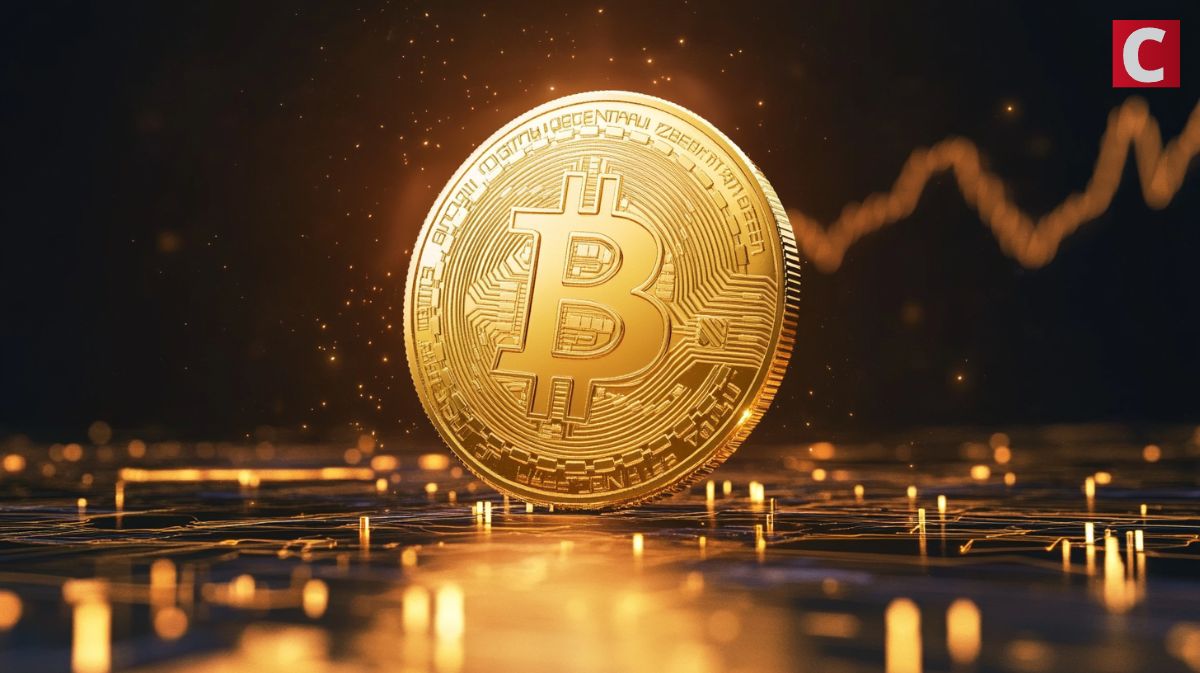
New task force seeks unified crypto standards, opening cross-border liquidity in months.
Cover art/illustration via CryptoSlate. Image includes combined content which may include AI-generated content.
Two financial superpowers have agreed to a groundbreaking deal that will rewrite Bitcoin and crypto market investments over the next six months.
A UK and United States task force with a 180-day deadline aims to align Bitcoin and crypto product listings, custody, and disclosures across the two markets.
The initiative, announced during the state visit and co-chaired by finance ministries with regulators involved, is framed to remove cross-border frictions in capital markets and digital assets, with recommendations expected around March 2026.
The scope includes cooperation on wholesale digital markets and a timetable to report within six months. This timing coincides with a fresh U.S. exchange framework that lets NYSE, Nasdaq, and Cboe list spot commodity and crypto exchange-traded products under generic criteria, shortening market to about 75 days and opening a product pipeline beyond Bitcoin and Ethereum.
The U.S. generic listing standard sets repeatable eligibility, surveillance sharing, and disclosure patterns. The task force can map those patterns into a cross-listing pathway for London that recognizes outcomes rather than duplicating the process.
The U.S. rule change reduces the interval between filing and the first trade to a fixed window, which has been one of the primary gating items for new single-asset and basket products.
If London accepts the U.S. package as equivalent for secondary listings, exchanges can carry over diligence and market surveillance agreements, then scale local documentation to UK rules.
UK capital-raising reforms that raise thresholds for follow-on offerings and streamline prospectuses provide the other half of the plumbing due to shorter documentation windows and a new public offers platform that will be phased in through 2026.
A market structure test case already exists in London.
The London Stock Exchange permits professional-only crypto exchange-traded notes, launched in 2024, and by mid-2025 hosted 17 lines from eight issuers, with a Europe-wide turnover base built during 2024.
This venue can import price discovery from the United States once a matching product trades on a U.S. exchange under the generic standard. The U.S. spot bitcoin ETF experience shows how spreads respond when multiple market makers compete and depth consolidates.
Cboe analysis of post-launch trading shows a compression in national best bid and offer spreads in the early sessions, moving into low basis point territory as assets and quoting interest scale. Those mechanics translate to London if order flow and hedging inventory are portable across venues and if settlement and custody risks are standardized.
The U.S. Office of the Comptroller of the Currency has affirmed that national banks may offer crypto asset custody, with the prior non-objection step no longer required when banks implement controls consistent with earlier interpretive letters.
The UK has consulted on crypto custody and sterling stablecoin regimes, with the FCA and the Bank of England coordinating. A joint FAQ that clarifies sub-custody and segregation standards would allow bank-affiliated providers to appoint cross-border agents and bring triparty settlement, reconciliations, and attestation cycles into the ETP workflow.
According to OCC guidance and UK consultation papers, that structure reduces concentration in single provider models and lowers operational drag for issuance, creation, and redemption.
The practical output of a six-month playbook is a short stack of documents that firms can use immediately.
One is a recognition note that connects the SEC generic listing criteria and surveillance sharing to UK listing requirements for secondary lines. Another is a custody sub-delegation FAQ that describes wallet operations, cold and hot key segregation, and assurance reporting across jurisdictions.
A third is a model disclosure annex covering forks, airdrops, staking treatment where applicable, valuation agents, and corporate actions.
Together, these items cut time to list for a UK secondary line toward the U.S. 75-day mark, where the originating product already meets generic criteria, while avoiding a second round of first-principles review.
Over the next two quarters, a base case assumes those soft law tools rather than wholesale statute changes.
In that case, U.S. venues continue to expand the roster under the generic rule, with single asset trackers such as Solana and XRP likely among early candidates.
London can then mirror top U.S. lines, add multi-asset baskets, and rely on arbitrage to connect quotes.
Under that setup, London Bitcoin and crypto ETN average daily volume increases in the mid double-digit range from present levels, and quoted spreads compress by roughly one-fifth to one-half compared with the summer baseline, drawing on the depth and maker competition seen in the United States and on the larger European turnover that built through 2024.
The issuance mix shifts as U.S. brands pursue secondary lines and as existing European issuers extend families to keep index coherence across venues.
If regulators publish a template that treats a defined U.S. crypto ETP disclosure pack as outcomes equivalent for UK purposes, the number of London lines could rise into the high teens or low thirties within the window, with bank market makers onboarding once custody sub-delegation is explicit.
In that case, custody fees move lower for large mandates as bank providers bring balance sheet and control frameworks, and creation or redemption cutoffs move earlier in the session.
The bear case limits output to principle-only statements, which preserves current frictions, keeps London count near present levels, and leaves the most widespread improvement to organic maker competition.
Capital raising sits alongside listings and custody. The UK reform track raises follow-on thresholds, trims prospectus periods, and introduces a platform model for public offers.
That design can be paired with U.S. shelf mechanics so Bitcoin, crypto infrastructure, and fintech issuers can run parallel books rather than sequence markets. A precedent exists in North American cross-border offerings that use mutual recognition of disclosure, documented in U.S. and Canadian materials for the multijurisdictional disclosure system.
Applying that pattern to digital asset ETP documentation and operating company raises would reduce duplicative drafting and enable simultaneous marketing windows without creating a separate bespoke carve-out.
First, watch for a dual listing fast path in the interim report around day 90 that outlines how exchanges can port surveillance and eligibility packages.
Second, look for custody sub-delegation language referencing both OCC letters and UK custody consultation outcomes, with explicit wallet control and attestation mapping.
Third, track a model disclosure annex that issuers can staple to both U.S. and UK filings.
Fourth, connect UK capital raising thresholds to U.S. shelf capacity in a way that lets issuers synchronize calendars.
The final metrics to monitor are LSE line count, average spreads, and daily volumes, collateralized by maker rosters and custody provider names.
Flows and positioning can move earlier than formal recommendations, so the pipeline may adjust before the 180-day mark. CoinShares shows sustained inflows into digital asset funds through late summer, with the United States in the lead, which supports inventory for creations once new tickers are listed.
If U.S. exchanges continue to open new spot lines under the generic rule and if London recognizes that diligence, the transfer of price discovery will show up in London quotes within the quarter through standard cross-venue arbitrage channels.
The primary risk to the timeline is supervisory bandwidth rather than a need for new law, since most of the required actions involve recognition notes, FAQs, and shared templates rather than statutory rewrites.
The task force described the six-month window as a target for recommendations, and the calendar now runs.
Also known as “Akiba,” Liam Wright is a reporter, podcast producer, and Editor-in-Chief at CryptoSlate. He believes that decentralized technology has the potential to make widespread positive change.
CryptoSlate is a comprehensive and contextualized source for crypto news, insights, and data. Focusing on Bitcoin, macro, DeFi and AI.
Catch the latest in crypto by following us on X. Stay informed on the go.
CryptoSlate’s latest market report compares Bitcoin and DeFi to some of the most established benchmarks in traditional finance.
Disclaimer: Our writers’ opinions are solely their own and do not reflect the opinion of CryptoSlate. None of the information you read on CryptoSlate should be taken as investment advice, nor does CryptoSlate endorse any project that may be mentioned or linked to in this article. Buying and trading cryptocurrencies should be considered a high-risk activity. Please do your own due diligence before taking any action related to content within this article. Finally, CryptoSlate takes no responsibility should you lose money trading cryptocurrencies.
Celebrating eight years of innovation, TRON pledges resilience and advances as a financial inclusion powerhouse.
Bitcoin, a decentralized currency that defies the sway of central banks or administrators, transacts electronically, circumventing intermediaries via a peer-to-peer network.
Get the latest crypto news, insights and market analysis straight to your inbox.
We respect your privacy and will never share your email address.
Please add [email protected] to your email whitelist. You may unsubscribe at any time.
Disclaimer: By using this website, you agree to our Terms and Conditions and Privacy Policy. CryptoSlate has no affiliation or relationship with any coin, business, project unless explicitly stated otherwise. CryptoSlate is only an informational website that provides news about coins, blockchain companies, blockchain products and blockchain events. None of the information you read on CryptoSlate should be taken as investment advice. Buying and trading cryptocurrencies should be considered a high-risk activity. Please do your own diligence before making any investment decisions. CryptoSlate is not accountable, directly or indirectly, for any damage or loss incurred, alleged or otherwise, in connection to the use or reliance of any content you read on the site.
© 2025 CryptoSlate. All rights reserved. Terms & Conditions | Privacy Policy
Please add [email protected] to your email whitelist.
Stay connected 👇
source










